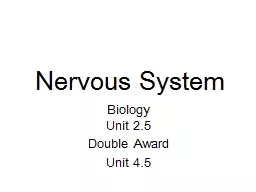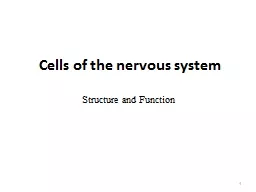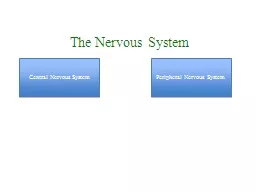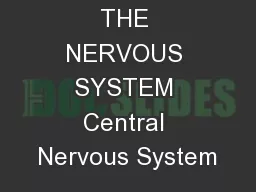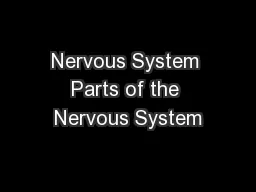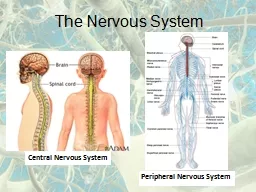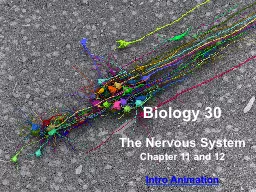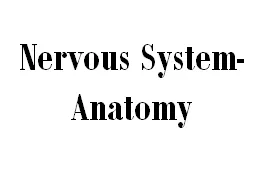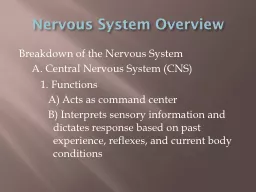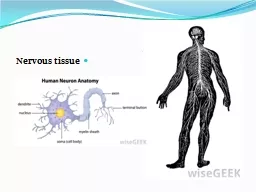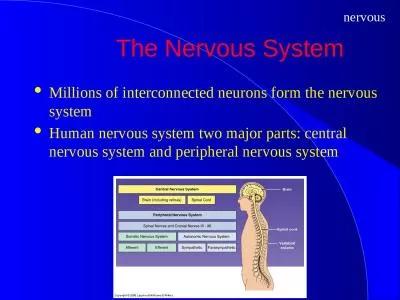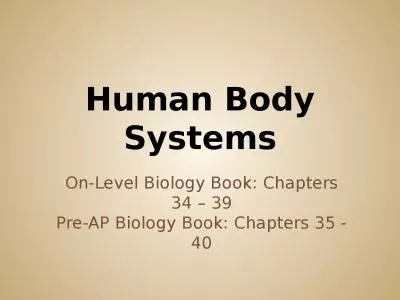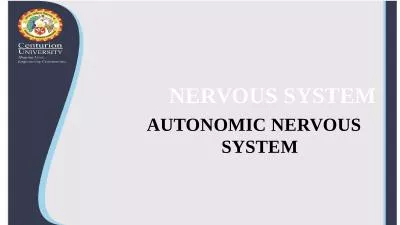PPT-Nervous System Biology Unit
Author : DateMeDarling | Published Date : 2022-07-27
25 Double Award Unit 45 Why do animals have a Nervous System Animals need to be aware of changes in their surroundings Light Sound Touch Temperature Chemicals Examples
Presentation Embed Code
Download Presentation
Download Presentation The PPT/PDF document "Nervous System Biology Unit" is the property of its rightful owner. Permission is granted to download and print the materials on this website for personal, non-commercial use only, and to display it on your personal computer provided you do not modify the materials and that you retain all copyright notices contained in the materials. By downloading content from our website, you accept the terms of this agreement.
Nervous System Biology Unit: Transcript
Download Rules Of Document
"Nervous System Biology Unit"The content belongs to its owner. You may download and print it for personal use, without modification, and keep all copyright notices. By downloading, you agree to these terms.
Related Documents

